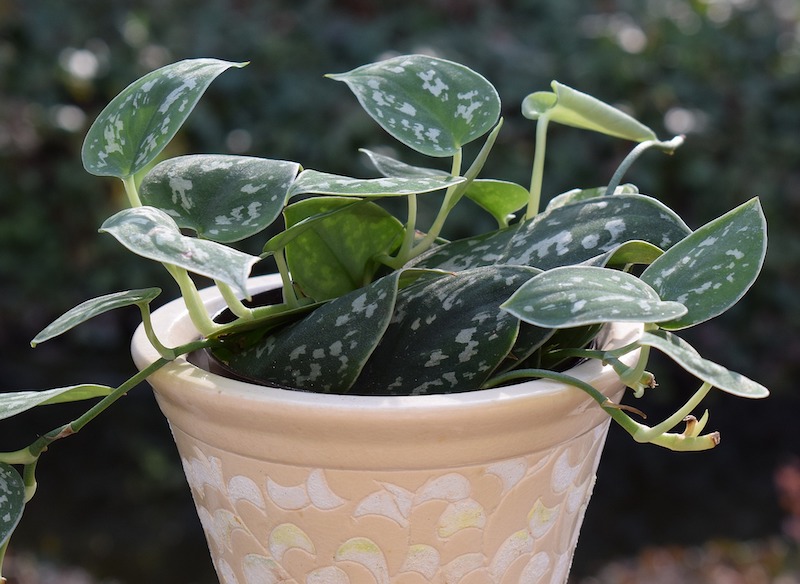Philodendrons are popular tropical plants native to Central and South America. This large family of plants contains over 450 different varieties, all with beautifully unique foliage. Philodendrons are popular houseplants for being easy and adaptable to many environments. When you bring your philodendron home, you may be interested in moving it from its nursery pot to a decorative container. Every few years, you’ll need to refresh the soil for your philodendron to thrive. This article will give you tips on how to improve your plant’s health by potting or repotting your philodendron and when to do so.

Potting Philodendron
Initially your new philodendron will be in a nursery pot, sometimes with roots protruding out of the drainage holes. In this case, you’ll want to provide the plant with better drainage and more room to grow into. Select a container that is only one size larger than the philodendron’s nursery pot to avoid watering issues. Overly large containers may retain too much moisture for too long, causing root rot. For similar reasons, your philodendron plant’s new pot should have adequate drainage holes.
Alternatively, if your philodendron is perfectly happy and healthy in a nursery pot, you may opt to use a cachepot. Cachepots are decorative covers for plastic nursery pots, usually without drainage holes. When you go this route, you’ll need to water the plant outside of the container. Drain the plant well before placing it back in the decorative container. If the philodendron’s roots sit in water for too long, it will develop root rot.

Repotting Philodendron
Philodendrons are ready to repot once the roots come out of the drainage holes. Another good reason to repot your plant is to refresh the soil. Over time, salt from fertilizer and tap water will build up in the soil. Too much salt can cause your plant’s health to decline. Philodendrons should be repotted every 1 to 2 years, depending on how fast the plant is growing. Refresh the plant’s soil every few years during the spring or early summertime. This timing will make the transition easier for the plant as it will be actively growing.
A severely rootbound plant can be difficult to untangle. Water the plant in the old container with lukewarm water, and let it soak for a few minutes to reduce the risk of shock. Generally though, philodendrons rarely have issues adapting to new situations. Next, gently remove the plant from the old container and loosen the soil, teasing out the roots as much as possible. Select a pot one size up from its current container and add new potting soil. Finally, give the plant an extra drink of water, emptying any that drains into the saucer.
Best Soil For Philodendron
Use quality potting soil that is light, nutrient rich and has great drainage. Typically, a general-purpose potting soil is sufficient for potting philodendron. Some gardeners want to have more control over the soil blend. For an outstanding homemade blend, combine equal parts orchid bark, perlite, and peat moss or regular houseplant soil. The orchid bark sometimes comes with horticultural charcoal, which is great for reducing bacteria. The bark and perlite are good for aeration, allowing roots to receive adequate oxygen.
Philodendron Drainage
Adequate drainage is one of the most important things for your philodendron. In addition to using well-draining soil, you’ll want to make sure the plant never sits in water. Keep the saucer or cachepot free from puddles. This will prevent pests, fungal issues, and disease. Keep the soil moist if you can, but if you notice fungus gnats, the soil may be too soggy. Philodendrons tolerate short periods of dryness.
 |
Author Chris Link - Published 3-6-2023 |
